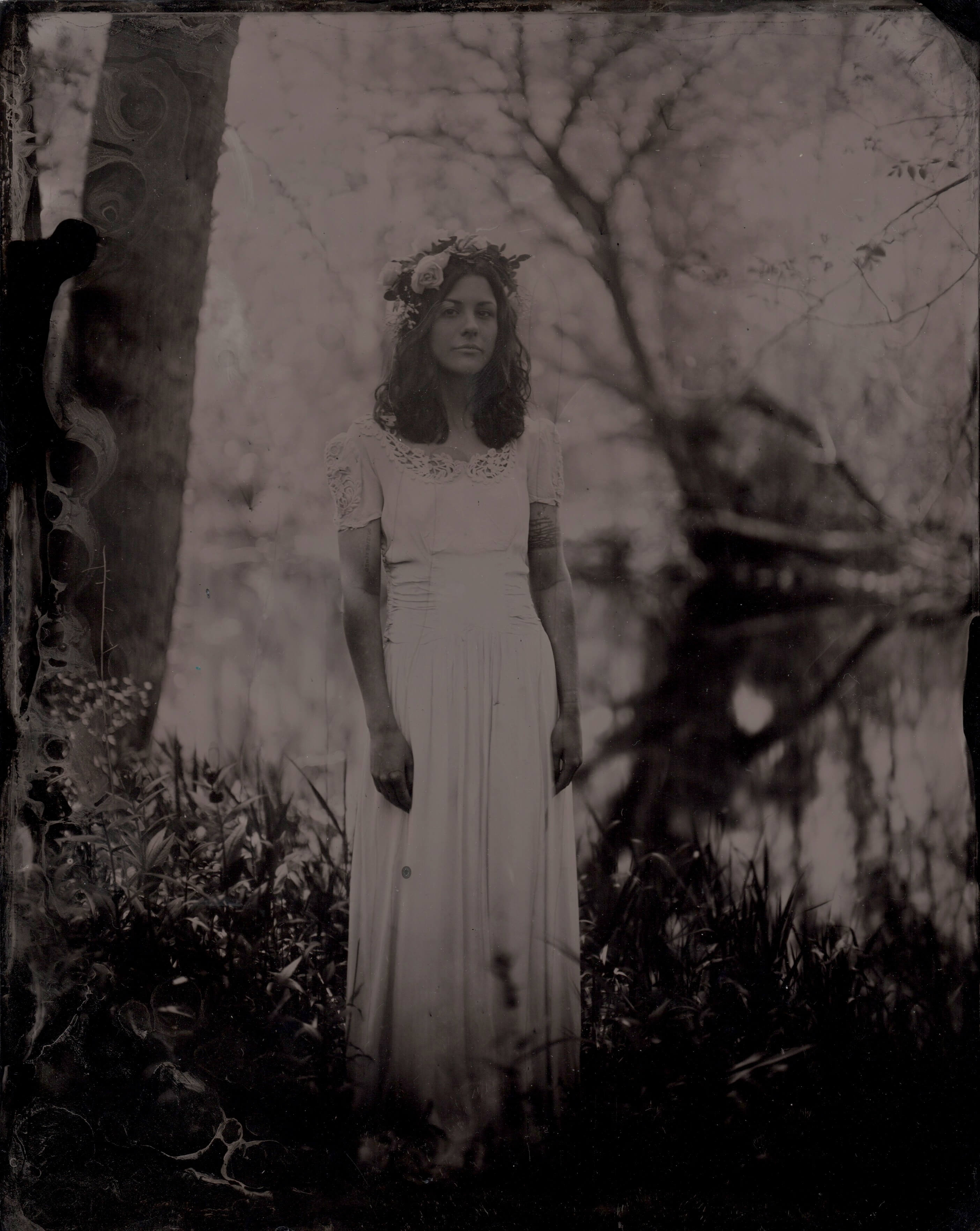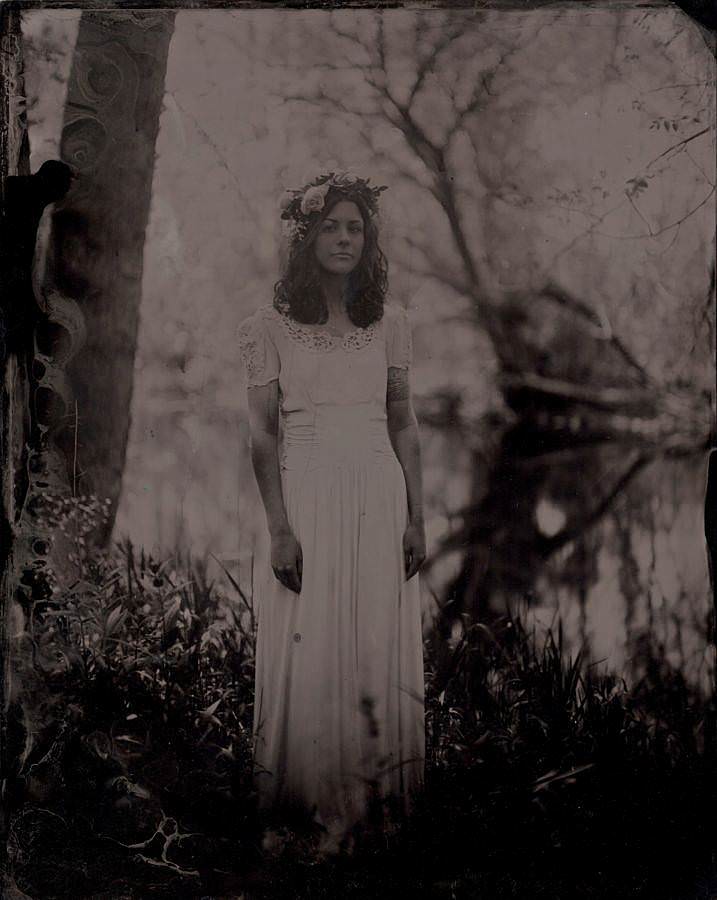Margaret Muza is a photographer specializing in the bygone wetplate process. She has a studio in Milwaukee, WI where she practices this method most widely used during the American Civil War, making modern images of heirloom quality on tin. She is the owner of Guncotton Tintype.
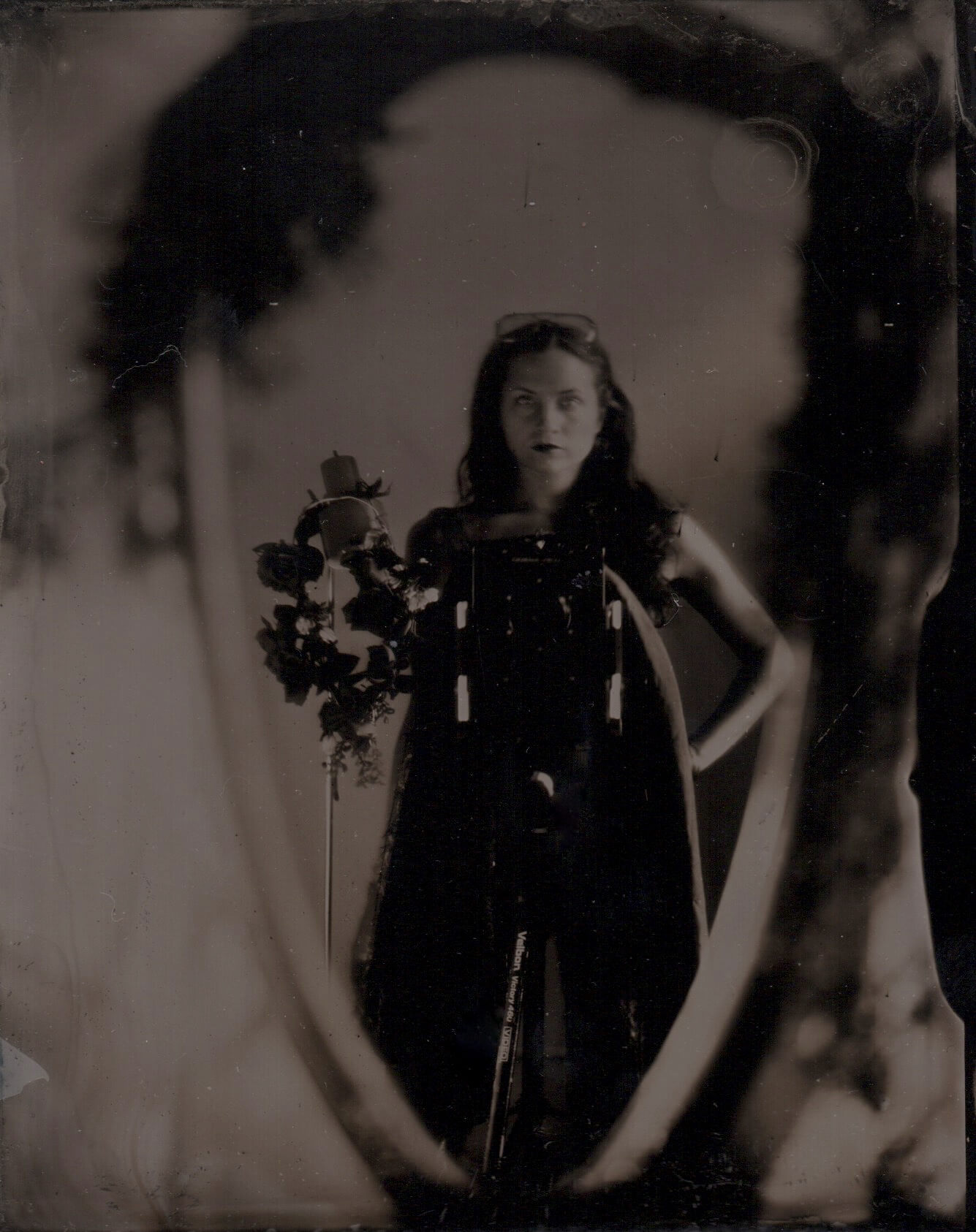
Tell us a little bit about yourself and what you do. I am a photographer living in Milwaukee, Wisconsin. I work with the wet plate photographic process that dates back to the 1860’s.
How did your interest in photography begin? My interest in photography began with my interest in tintypes specifically. The only camera I owned before was the camera on my phone. It was my love of history and all things old that led me specifically to learn this process. I always loved old photographs, especially the tintype images from the Civil War. I used to wonder exactly what it was that made people look so different in those images, so ghostly. When I did a little research, I found out that with the right equipment and chemistry, it’s still possible to take images this way. Once I started to get comfortable with the process, I began to experiment with my subjects and the way I framed them. I’m always learning and that’s what I like so much about it.

What is it like living and working in Milwaukee? Milwaukee has always been home for me, so I love it the most for nostalgic reasons. But beyond that, it’s filled with talented people and it feels like there’s room for everybody to grow. Working here is great because everyone is really supportive of each other. I have many talented people in my life that have all helped make me better at what I’m doing. I hope I’ve helped them, too. I’ve met a lot of people since I started taking tintype portraits and it really connects me to this city even more. This spring, I will be rigging a darkroom in the trunk of my car so that I can drive around and take tintypes with a lot less hassle, and I’m looking forward to photographing the city. There’s a lot of history here to explore.
With such an analog practice, what are your views on digital photography? I love digital photography, it makes capturing moments faster and easier and that’s important, socially and historically. Some people thinks it’s crazy that I chose this process to jump into first. It takes a lot of work and practice to get good images, and the chemical process is so involved. I see it as a science first, and art second. I think it makes sense for me to start at the beginning. I recently learned how to develop regular film, and I liked it. I might jump into digital in the future, but right now there’s still so much to explore with my tintypes and I am enjoying that the most.
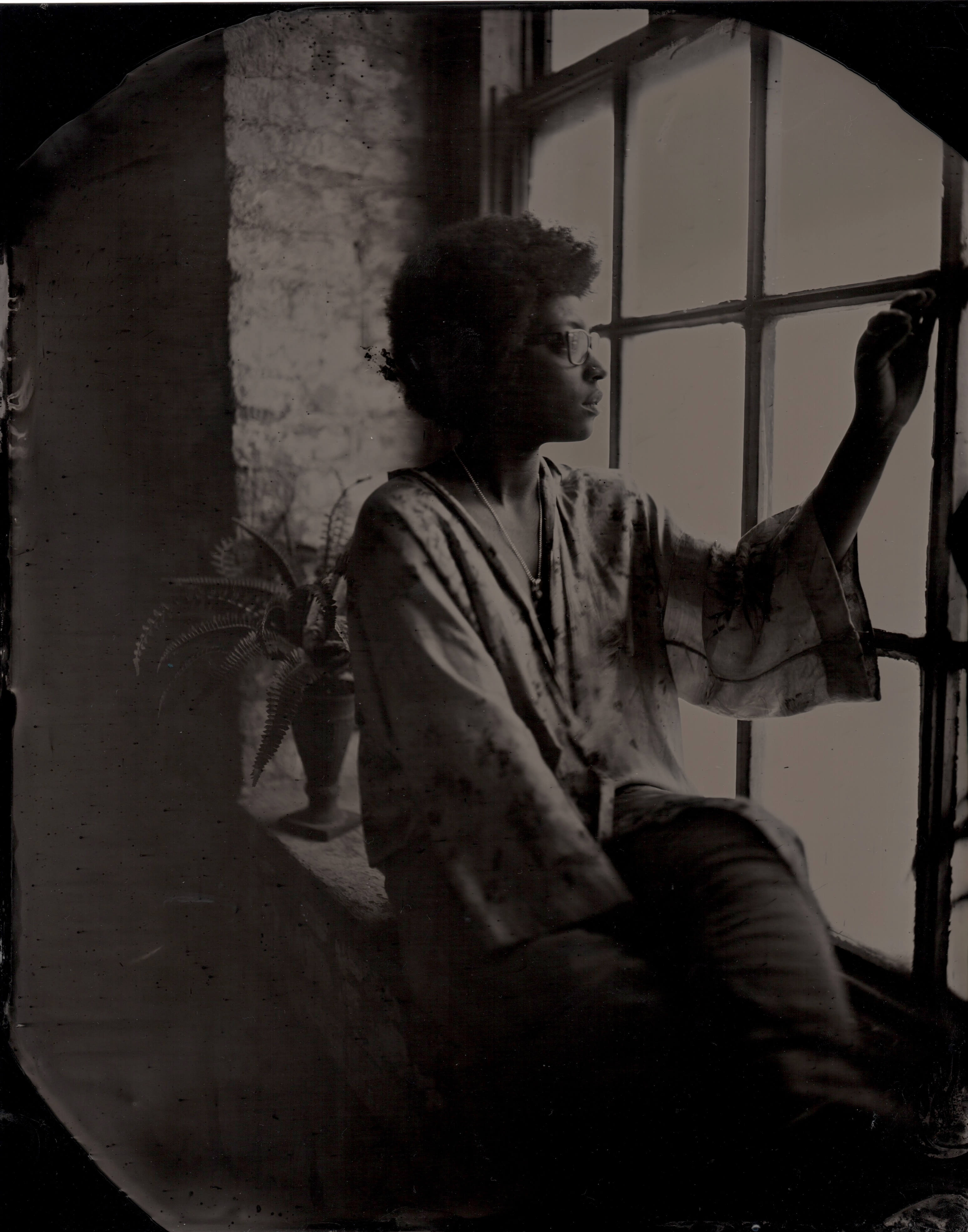
What is the process of your work like? It starts with an emulsion called collodion that is poured onto a metal plate. The plate is then placed into a bath of silver nitrate where it combines with the collodion to create a light sensitive layer. After sensitizing the plate for three minutes, and working in a dark room with a safe light, the plate comes out and is loaded into the plate holder for a large format view camera. Next, it’s exposed for a few seconds or more depending on the light, and it brought back to the dark room for development. This process is called wet plate because these steps need to be completed while the collodion is wet, about ten minutes or more depending on the temperature. After it’s developed and fixed, it gets washed, dried and varnished. A properly made plate can last 150+ years.
If you could go back in time and experience a period in history, which would you choose? If I could go back in time, I’d choose to go back to the early 1900s to march with the suffragettes. I love this era when architecture and fashion was beautiful, as was poetry and the arts. But as a woman, the best time to be alive is someday in the future, when our rights are not threatened and we are equally represented in government by people of all races, religions, and sexual orientation.
What’s your absolute favorite place in the city/the world to be? My favorite place to be is wherever my family is. I’m at my happiest when I am with them. Nobody can make me laugh harder and nobody has my back more.
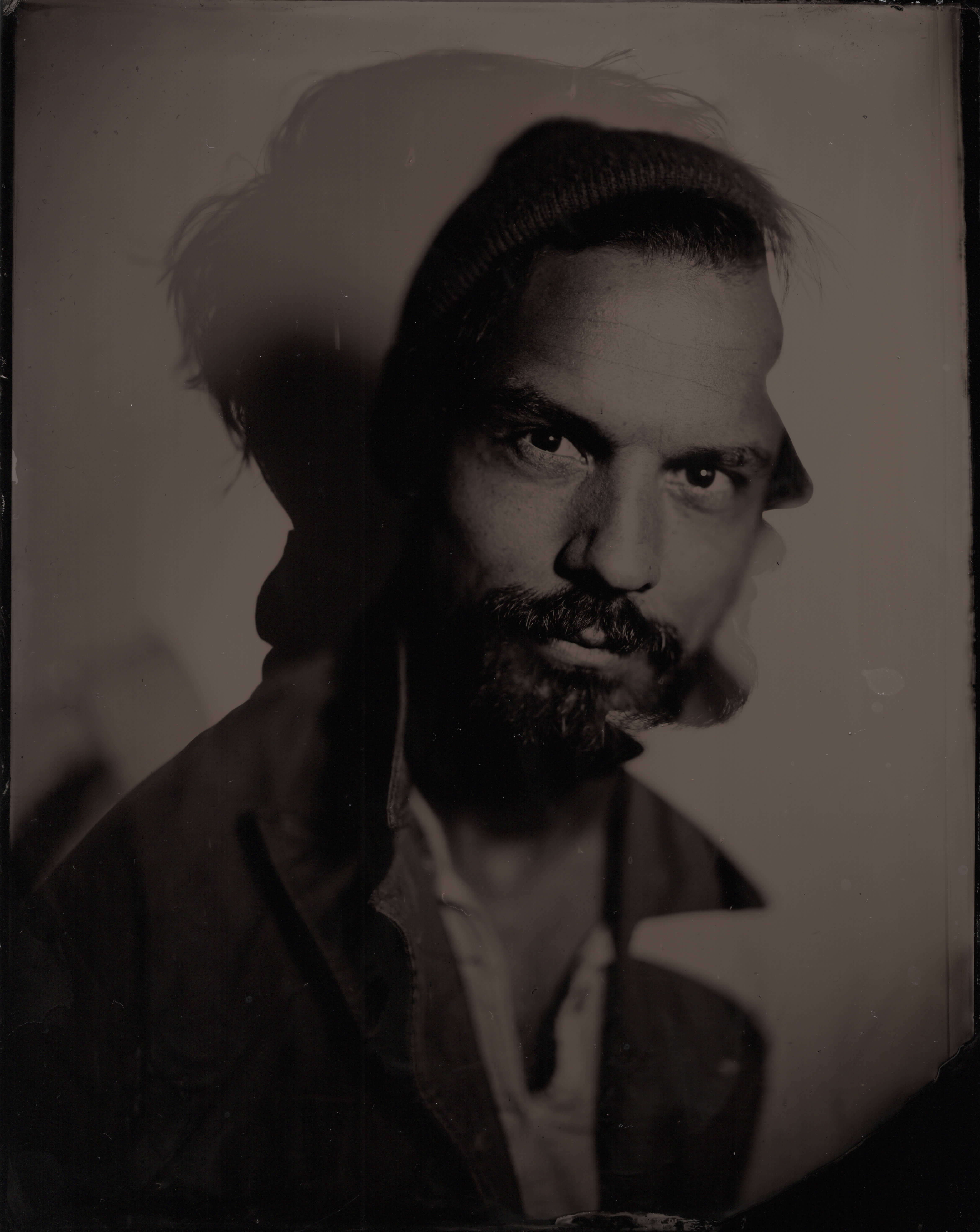
What are you really excited about right now? Right now I’m really excited about a few events I have coming up. I am a finalist for a really great residency program at Milwaukee’s oldest hotel, The Pfister. It’s a beautiful place, and it would be an honor to win it! I would get to work out of the artist space for a year taking tintypes, and experimenting in a beautiful and historic setting. (You can vote for me here!) I’m also excited to have a booth again in February at a really great motorcycle show Mama Tried. Lots of amazing bikes and faces to photograph.
Do you collect anything? I collect lots of old clothes and old pictures. I also started collecting old props or materials I can use in a photoshoot. I love rusty things and sparkly things, and they look great on tintype. My book collection is growing pretty quickly as well. It’s a good thing I have a studio to display it all!
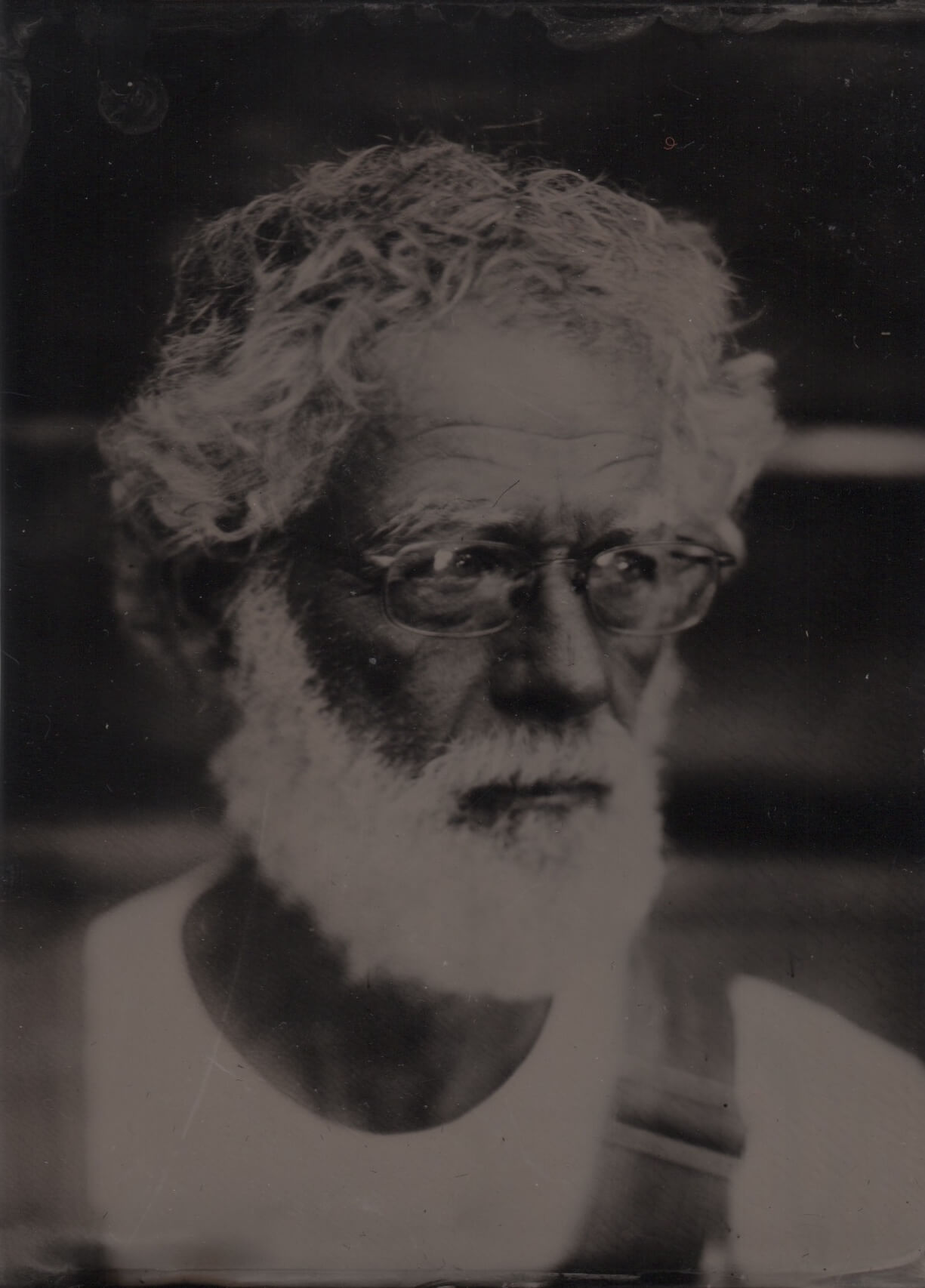
Can you share one of the best or worst reactions you have gotten as a result of your work? The best reactions I’ve seen as a result of my work is always at the same moment in the process. When the image comes out of the dark room before it’s fixed, it looks like a negative. When I pour the fixer onto it, it comes to life before your eyes and it’s really cool to watch. Sometimes people let out a scream or a gasp when they see it and I love that. The first time I saw it, I got goosebumps all over and I felt like I’d just seen a ghost. It was almost spooky. I can see why in the early days of photography, it was thought by some that being photographed was to have your soul stolen. It really seems like magic and it’s why I’m addicted to this process.
